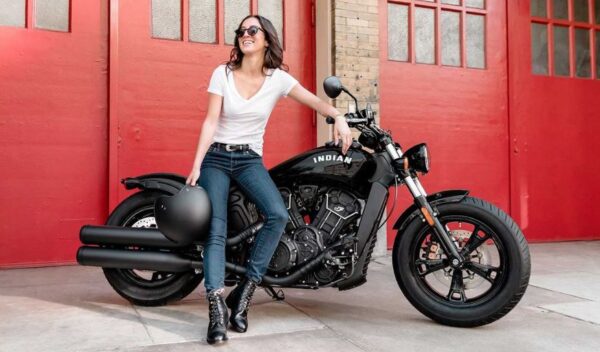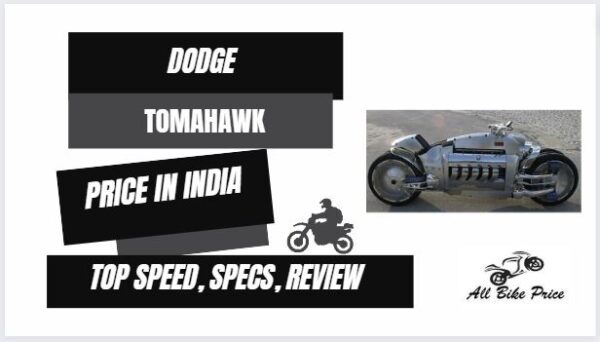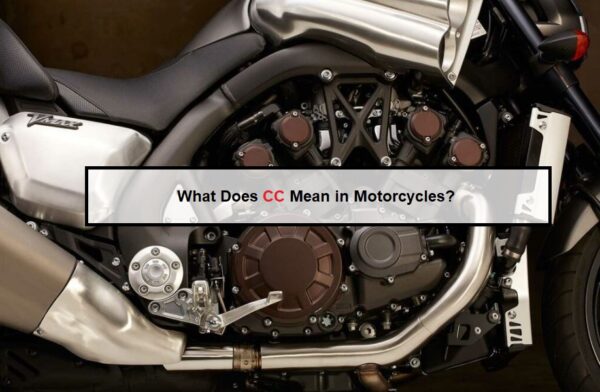Secrets Revealed: How to Buy the Best Cruiser Motorcycle!
Cruiser Motorcycle Buying Guide
Cruiser Motorcycle Buying Guide – A distinctive appearance characterizes cruiser motorcycles. They have a style similar to American motorcycles from the 1930s until the 1960s, and most of them are equipped with an engine that is V-twin.
Another distinctive characteristic is a comfortable rider’s position with their feet in the front Cruisers usually have low seats, wide bars, and foot pegs pushing forwards of the bicycle.
This riding style is designed to enhance comfort for riders and makes the cruiser an excellent alternative for leisure or commuting riding.

Cruiser Brands
There are a variety of motorcycle manufacturers that provide cruisers. They include European manufacturers like Moto Guzzi, Ducati, and Triumph.
The Japanese “Big Four” brands are cruiser-focused: Kawasaki, Honda, Suzuki, and Yamaha. The long-defunct Indian motorcycle manufacturer is now back and has a lineup that includes cruisers.
However, there’s no brand more associated with this area than Harley-Davidson. Harley was among the first brands to introduce cruiser motorcycles in the 1970s.
The brand was a huge sales success during the 1980s and 1990s. Today, Harley-Davidson has over a dozen cruiser models to pick from – greater than any other manufacturer.
Cruiser Motorcycle Prices
A new cruiser motorcycle could cost anything between $4,400 and $24,000. The median price is around $12,100, based on our research.
Motorcycles at the lower price point are typically smaller in engine size and are typically made by Japanese manufacturers like Honda and Yamaha.
If you pay more, you can have a bike with a bigger engine and greater acceleration. Sometimes, it is just a tiny difference between $2,000-$3,000. In other instances, it could be three or more times more.
For example, Moto Guzzi and Triumph brands Triumph or Moto Guzzi do not offer cruisers priced at less than $11,000.

Cruiser Motorcycle Key Specs
There are numerous cruiser models available. The majority of them follow a similar formula, however.
Most cruisers are fitted with a V-twin engine with displacements ranging from 500cc to 1800 cc. Cruisers today typically weigh between 700 and 500 pounds.
The majority of them have a seat with a height between 26 and 30 inches, a lower height than the other styles of motorcycles.
Cruiser Advantages and disadvantages
- A comfortable foot-forward, seated position
- The comfortable ride even on uneven surfaces
- Ideal for customizing (lots of accessories from aftermarket stores like saddlebags and windscreens, lights, and even passenger seats)
- A few choices for newbies
- Not very agile when compared to sportbikes or standard bikes.
- It has fewer features that are high-tech than others in the segment (built-in navigation systems and infotainment systems are rare)
- Easy to maintain stability and walk around in the stop-and-go traffic
- Strong engines that offer quick acceleration off the line
- A popular segment with a broad choice of models and pricing

Cruiser vs. Touring Motorcycles
A tourer might be the perfect bike if you’re searching for a motorbike to travel across the country or even through the states. Touring bikes have windshields and fairings to provide more highway comfort.
They typically have more advanced options than cruisers, like navigation and infotainment systems, Bluetooth connectivity with traction control, and airbags. Touring bikes also have more giant tanks of fuel to increase the range of their driving.
One of the obvious distinct features is their ability to carry cargo. Many cruisers can be equipped with soft saddlebags (these bikes are frequently called “baggers”).
Touring bikes are equipped with saddlebags. However, they are usually lockable, hard-sided, and waterproof. Tourers can be purchased with trunk cases of a large size too.
However, it is a good starting point for those who don’t intend on racking up the miles. Cruisers are generally priced much cheaper than touring bikes. They are also generally lighter, making them more comfortable navigating in traffic.
Cruiser vs. Standard Motorcycles
Standard motorcycles are great all-purpose motorcycles and have some of the best features of the cruiser as well as sportbike categories.
Generally, standard bikes are upright in their riding, which is suitable for commutes and longer rides, and they offer a more agile handling experience than many cruisers.
A wide range of engines can be fitted to the standard bike, from tiny single cylinders to powerful V-twins and high-revving three-cylinders.
There are many more models and brands to pick from. The prices for both segments are fairly similar.
Before choosing a Cruiser, go through some of the most popular models to test drive. There’s something for everyone in this broad segment.
Cruiser vs. Dual-Sport Motorcycles
Dual-sport motorcycles look like street-legal dirt bikes. They are compliant with the road safety rules and include brake lights, turn signals mirrors, etc. but they’re specifically designed to tackle off-road terrain.
There are skid plates and wheels with high-tread and long-travel suspension to absorb big bumps but few other features.
This is why they are incredibly light and affordable. There are many dual-sport bikes for sale between $4,500 and $7,000. Cost range, such as those from Honda CRF250L and Suzuki DR200S.
Dual-sport bikes usually come with smaller engine sizes, ranging between 200 to 700 cm. The combination of low-cost lightweight, low weight, and low power makes dual-sport bikes an excellent choice for novices.
Dual-sport bikes may not be for all riders, however. They are generally not powerful enough for use on highways. They can also be a bit uncomfortable due to their high seat height, particularly those with shorter legs. If you’re not interested in a road trip, keep cruisers.
Cruiser vs. Sport Bikes
Sport bikes are the most different from cruisers they can get. They are made to speed straight lines and drive through roads with switchbacks, and their design is akin to road racing motorcycles.
You’ll be able to recognize one due to its aerodynamic bodywork and hunched-over posture. These aren’t the most comfortable bikes for long distances.
Sports bike engines are likely to be different as well. Some models have inline two-, three- four-cylinder engines which produce maximum power in this range of revs. In contrast, the V-twin is the most famous popular cruiser choice and typically has low-end torque.
The only common thing is the price. Both segments share a price range from $4,500 up to $25,000.
Overall, consider your requirements when deciding between these bikes. If you’re looking for a motorcycle to commute on or for relaxing weekends, then a cruiser will be the best and more comfortable choice.
A sport bike might be the best choice if you’re looking for a motorbike with razor-sharp steering that isn’t used for daily or long journeys.

Cruiser History
Cruisers today are influenced mainly by American motorcycles of the 1930s through 1960s. This includes those from the 1930s to 1960s, such as Harley-Davidson EL, FL, and K Model, as well as the Indian Scout and Chief.
Riders loved these v-twin motorcycles due to their speed and ease of use. As time passed, they became an open canvas for customizing who could upgrade their bikes by swapping out parts from other models, such as fuel tanks and fenders, handlebars suspension, wheels, and more.
The custom motorcycle industry was small, and a few films, such as the 1969 film “Easy Rider,” made it mainstream.
In the next few years, the top manufacturers started offering custom-built motorcycles made by factories, with a mix of components and other parts of their range. These were later referred to as cruisers.
1971’s Harley-Davidson FX 1200 Super Glide is widely recognized as the first to be used – it utilized components of both the FL and XL models.
This FX came to be followed by motorcycles such as the Kawasaki Z900LTD, Suzuki GS-550 Low Slinger, and the Triumph T140D-Special.
The new models were released with the same design, including those of Yamaha Virago, Honda Shadow, and the Harley-Davidson Softail.
The “Power cruiser” segment was born shortly after the introduction of the Yamaha VMAX and its big four-cylinder engine. They push the limits of cruiser speed and design, and handling.
Today, the power cruiser category comprises models like Ducati XDiavel, Harley-Davidson FXDR 114, and the Suzuki Boulevard M109R.
Should I Buy a Cruiser Motorcycle?
There are plenty of good options when you’re looking for a cruiser motorbike. However, your preferences and lifestyle will determine if the cruiser is suitable for you or not.
Think about a cruiser when you intend to use a motorbike for daily commuting or recreational riding. Cruisers usually have a less rigid suspension than other motorcycles, which helps remove bumps and dips on the road, giving you an easy ride.
Cruisers are likelier to feature a low-slung seating position and wide and tall handlebars and foot pegs close to the motorcycle’s rear.
The rider is in a neutral or reclined posture, making cycling more comfortable for long distances. The low seat allows you to walk the bike when it is stopped easily or in slow-moving traffic.
However, you should avoid cruisers if you intend to travel for long distances, particularly on highways. A touring bike is ideal, such as the Honda Gold Wing or Indian Roadmaster.
These motorcycles come with a windshield and large fairings that cut breeze and help reduce fatigue for riders. Tourers also come with saddlebags, which effectively hold items and ensure it is dry.
The same applies when you’re looking for a bike with a smooth ride. Cruisers are good for weaving around corners; however, sports bikes are superior at controlling those curves. They feature an aggressive, hunched-over seat and a front suspension near vertical, giving riders greater control over their bike. They also can be more leaning into turns.

I am Jack. Since 2016, I’ve been a blogger, and I adore writing. I greatly enjoy writing about Bikes, Motorcycles, ATVs, technology, and money. I also write about health and fitness. I maintain numerous blogs, including https://allbikeprice.com. allbikepriceinfo@gmail.com is how you may get in touch with me.






